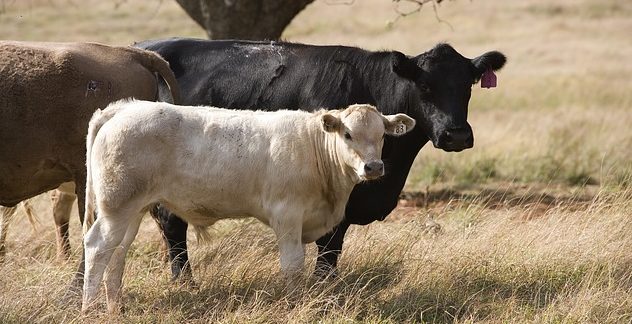November 29, 2018
By Michelle Pelletier Marshall, Global AgInvesting Media
NOTE: Bradley Wheaton is a member of the speaking faculty for next week’s Global AgInvesting Europe, 4-5 December in London, and will present as part of “Showcase: Making the Investment Case for Australian Agriculture”. Learn more and register.
Australia’s Gunn Agri Partners, an agricultural asset management company operated by co-founders Bill Gunn, Alan Hoppe, Daniel Hough and Bradley Wheaton, targets investment strategies that are supported by strong economic fundamentals, such as increasing demand for beef, grains, oilseeds, and almonds, that are attractive due to the potential to improve efficiency and productivity of assets. Upon this foundation, over the last three years Gunn Agri has built a 2.5 million acre portfolio of Australian assets consisting of five aggregations spread from the far northern region of Queensland to the New South Wales border that have achieved impressive value appreciation above the broader market.
In April of this year, Gunn Agri announced the fourth and final close of the Gunn Agri Cattle Fund, which is managed by Gunn Agri Partners. The Fund now stands with assets under management valued at A$200 million (US$155.5 million). Although the fund’s mandate focused on owning assets and production on-farm, it is is positioned to benefit from steady demand from the main markets of the U.S., Japan, and Korea, with increasing growth from China and other Asian nations.
The most recent transaction for the Fund was Gunn Agri’s completion of the acquisition of Abingdon Downs, a 484,000-hectare breeding property in Queensland, from the Keough Cattle Company, for an undisclosed sum. Included in the deal were 27,400 head of cattle, which will be folded into the herd managed by the fund’s operating company Cunningham Cattle Company, bringing the total herd head count to in excess of 70,000.
Gunn Agri’s Bradley Wheaton took a few minutes to update GAI News on its plans moving forward now that this acquisition is complete.
1). What’s the next step in Gunn Agri’s cattle strategy?
We are focused on executing our asset improvement and operating plans. This includes completion of productivity enhancements, such as the addition of new solar-powered watering points, fencing to open underutilized areas, pasture renovation, and operating infrastructure improvements. This enables us to increase cash returns over the life of our investments and reach our asset value growth targets.
2). Is a new fund on the horizon? Do you have plans to branch out to invest and manage funds in other geographies, such as Europe or Africa?
We have achieved a strong track record in generating asset value growth in excess of the market uplift from strategic improvements and transformation of land use in Australia. We see a scalable opportunity with less reliance on market growth to achieve attractive risk adjusted returns.
The team has had experience in other major agricultural regions including South America, Europe, and North America. However, the focus for Gunn Agri is Australia as it is in the sweet spot for the institutional investors we work with considering its macroeconomic growth prospects, export market access, transparent and stable regulation, openness to foreign investment, and proximity to growing markets in Asia.
3). What role does sustainability and ESG have in providing a return on investment to stakeholders?
After listening to investors in Australia and around the world, we are strongly of the view that sustainability of the investment strategies and a real and genuine framework for monitoring and reporting of ESG factors to stakeholders is a core requirement for our investments.
Gunn Agri has put this into practice through incorporating ESG considerations in the design of our Cattle Fund and is the first cattle grazing business in Australia to have implemented Global GAP, the worldwide standard for good agricultural practices.
It is inescapable that as managers of land assets you are managers of the environment, and we adopt practices that align improved financial performance with positive environmental outcomes such as carbon sequestration, biodiversity conservation, and renewable energy use. We are doing this right now because we can make it accretive to our financial returns and because of the importance of ESG to our investors.
4). What do you see as some of the challenges for agricultural investing moving forward?
One of the key macro factors we keep in mind when developing investment strategies is interest rates and relative property values. There have been two key drivers of broadacre agricultural land values in Australia over the last half decade – very strong markets for beef, sheepmeat, and wool, and stable markets for grains and oilseeds. Secondly, there has been a lower cost of capital, albeit, not to the extent that we have seen in markets such as North America and Europe. We believe those markets will largely continue to experience strong demand but we see the cost of capital increasing and see this as an important consideration.
This makes strategies that have less pure property market exposure more attractive. As a result we see opportunities in the development of assets for permanent planting, and to transform land in a sustainable way to higher value uses such as from low-input grazing to crop production
– Michelle Pelletier Marshall is the managing editor for Global AgInvesting’s quarterly GAI Gazette magazine and a regular contributor to GAI News. She can be reached at mmarshall@globalaginvesting.com.

Let GAI News inform your engagement in the agriculture sector.
GAI News provides crucial and timely news and insight to help you stay ahead of critical agricultural trends through free delivery of two weekly newsletters, Ag Investing Weekly and AgTech Intel.




